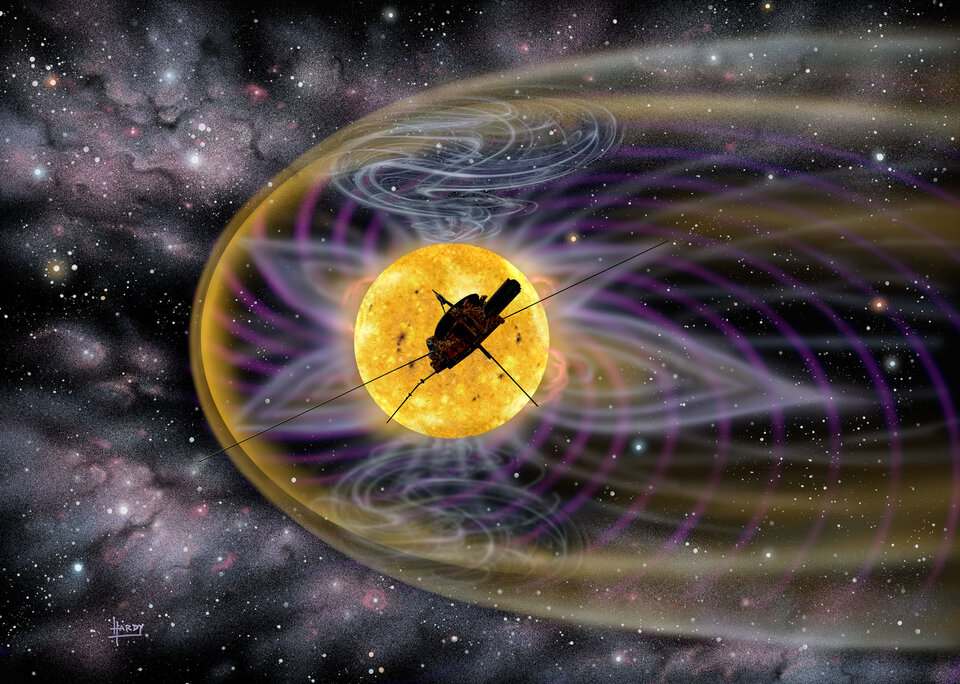Flip a Sun's pole for more dust
Astronomers once thought they understood how the Sun worked. A large ball of gas, generating energy by nuclear fusion, it also created a magnetic field enclosing Earth and the other planets in a gigantic magnetic bubble.
This bubble protected us from the dusty cosmic debris that shoots through space beyond the Solar System. But thanks to ESA's solar polewatcher Ulysses, that picture is changing...
11-year switch
Ulysses has revealed a complexity to the Sun's magnetic field that astronomers had never imagined. The Sun's magnetic field consists of a north pole, where the field flows out of the Sun and a south pole, where the field re-enters. Usually, these line up, more-or-less, with the rotation axis of the Sun.
Every 11 years the Sun reaches a peak of activity that triggers the magnetic poles to exchange places. The reversal was thought to be a rapid process but, thanks to Ulysses, astronomers now know it is gradual and could take as much as seven years to complete.
During this slow-motion reversal, the line connecting the poles - known as the magnetic axis - comes close to the Sun's equator and is swept through space like the beam of a light house. Eventually it passes through this region and lines up with the opposite pole.

Imagine if this happened on Earth! Compasses would become useless, given that they rely on the fact that Earth's magnetic axis is roughly coincident with its rotation axis, which passes through the North and South geographic Pole.
Although it seems surprising, magnetic pole reversals have happened on Earth also. The last time was about 740 000 years ago. After studying magnetic rocks, scientists conclude that field reversals on Earth take place once every 5000 to 50 million years (but are impossible to predict). Reversals on the Sun, however, are almost as regular as clockwork - every 11 years, with its magnetic axis changing position for most of that time.
More shooting stars
Earth's magnetic field is more stable because it arises in the metal-dominated regions in the deep interior of the planet. The Sun's field, however, comes from a high-temperature, electrified gas called plasma so it is a much more volatile thing. Loops of the magnetic field can burst through the surface of the Sun and when they do, they create the dark patches known as sunspots.
Astronomers are still studying the precise reasons behind the Sun's 11-year magnetic flips. However, using Ulysses, they have now shown that, when the Sun's magnetic axis points near its equator, it allows much more cosmic dust to enter the Solar System than normal. What does that mean for us?
If there is more dust in the Solar System, more of it will fall on Earth also. Scientists estimate that in the coming years, about 40 000 tonnes of dust could fall on Earth every day. However, most of it will be so small that it will burn up in the atmosphere before reaching the ground.
This will certainly increase the number of faint shooting stars during the next 11 years, but fortunately the Earth will not become a dustier place!




